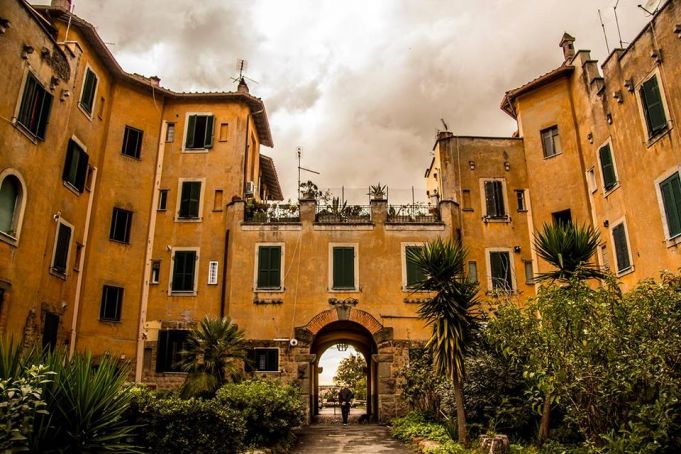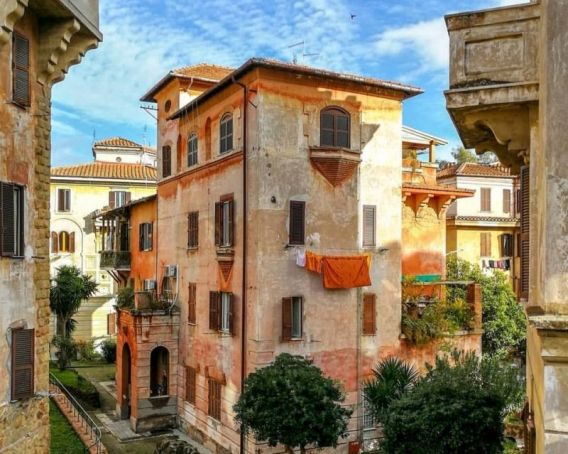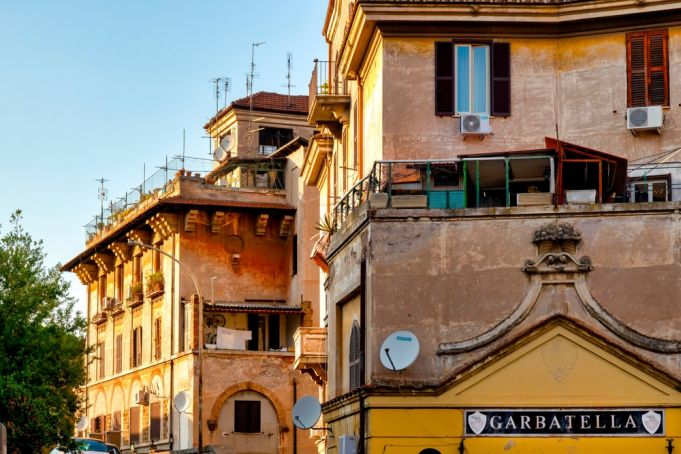Garbatella has its own distinct Roman identity.
Rome's Garbatella neighbourhood, which celebrates 105 years today, was designed primarily to house railway and dock workers working in the neighbouring industrial district of Ostiense.
When Garbatella's ground-breaking ceremony took place at Piazza Brin on 18 February 1920, an event presided over by Italy's King Victor Emanuel III, the fledgling south Rome suburb was considered remote by many Romans.
The area's design was based on the Garden City model developed by English architect Ebenezer Howard, the pioneer of the garden city movement.
The designs were adapted for a Roman context and the houses were built by the Istituto per le Case Popolari (ICP), a state building society dedicated to low‐cost public housing.

The original section of Garbatella, built in the early 1920s, is subdivided into project units, or lotti, consisting of several buildings grouped together around a common garden area, serving as an informal meeting place for residents.
Each lotto is numbered and there are 62 in total.
This focus on community as well as the area's relatively remote location - at the time - fostered a strong sense of togetherness and forged a distinct Roman identity among Garbatella residents.
The original Garbatella development is noted for its eclectic mix of architectural styles, with Rococo, Baroque and Rationalist influences, as well as its mass of internal courtyards and urban gardens.

By the late 1920s the area expanded rapidly, boasting the highest population density in the city.
This rush to meet increased demand for housing meant that the newer 'super-blocks' failed to live up to the ideals set out in the original Garden City-style designs.
However the older area of Garbatella remains a joy to explore, with its flowers and shrubs tumbling over garden walls onto the neighbourhood's narrow, winding streets.
Characterised by rambling lanes and steps, allotments and laundry on lines, Garbatella has a timeworn charm and retains a village feel.
How did Garbatella get its name?
As for the origins of its poetic name, there are several theories, the most popular of which relates to a well-loved local innkeeper called Carlotta (or Maria).
According to legend, this polite innkeeper, or "garbata ostella", led to the creation of the name we know today as Garbatella.

Garbatella in film
Garbatella has provided the backdrop to numerous films over the decades and was popularised in the 1993 movie Caro diario by Nanni Moretti who toured the area on his Vespa to the backdrop of the Leonard Cohen track I'm Your Man.
Garbatella also featured in the 2005 film Romanzo Criminale and the Italian television series I Cesaroni which ran from 2006 until 2014.
How to get to Garbatella
Garbatella is on the Metro B line, just three stops from the Colosseum, as well as numerous city buses.
The area can be reached by crossing the Ponte Settimia Spezzichino, a futuristic white steel bridge named in honour of Rome’s only female survivor of Auschwitz.
For details of Garbatella's 105th birthday celebations on Tuesday 18 February, see the city website.
General Info
View on Map
Garbatella: A short history of Rome's garden quarter
00154 Garbatella, Metropolitan City of Rome, Italy

















